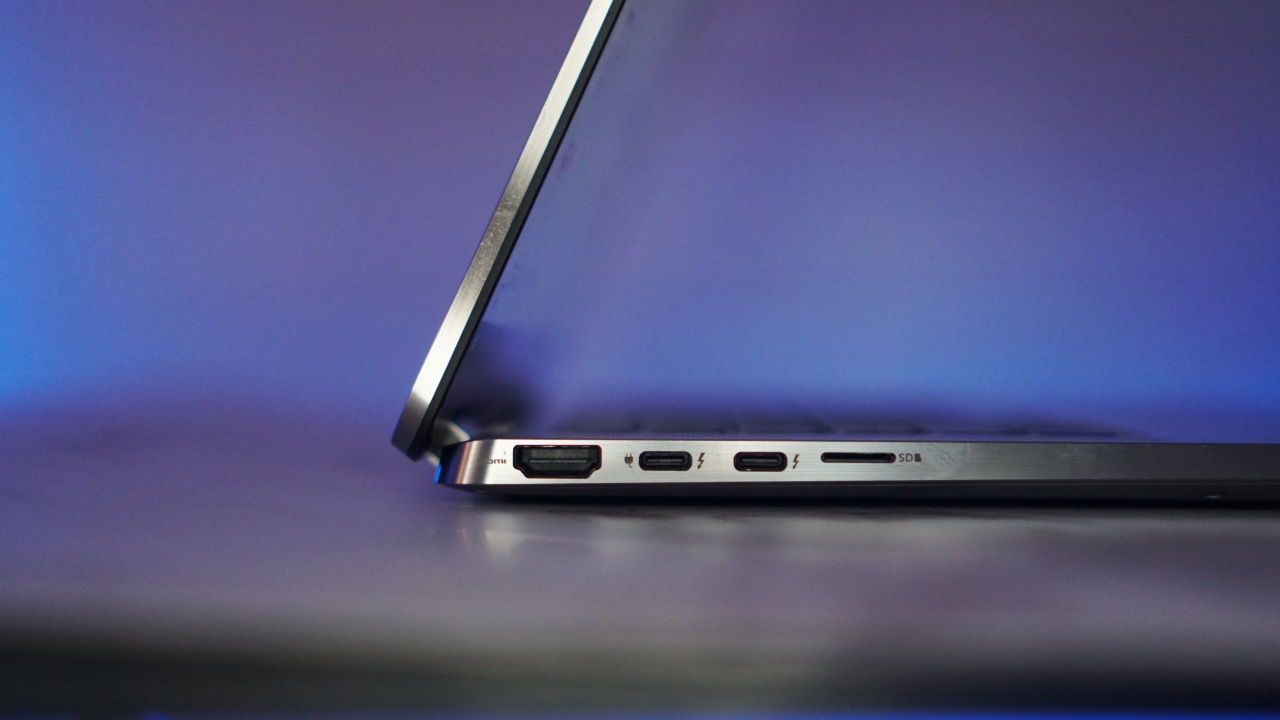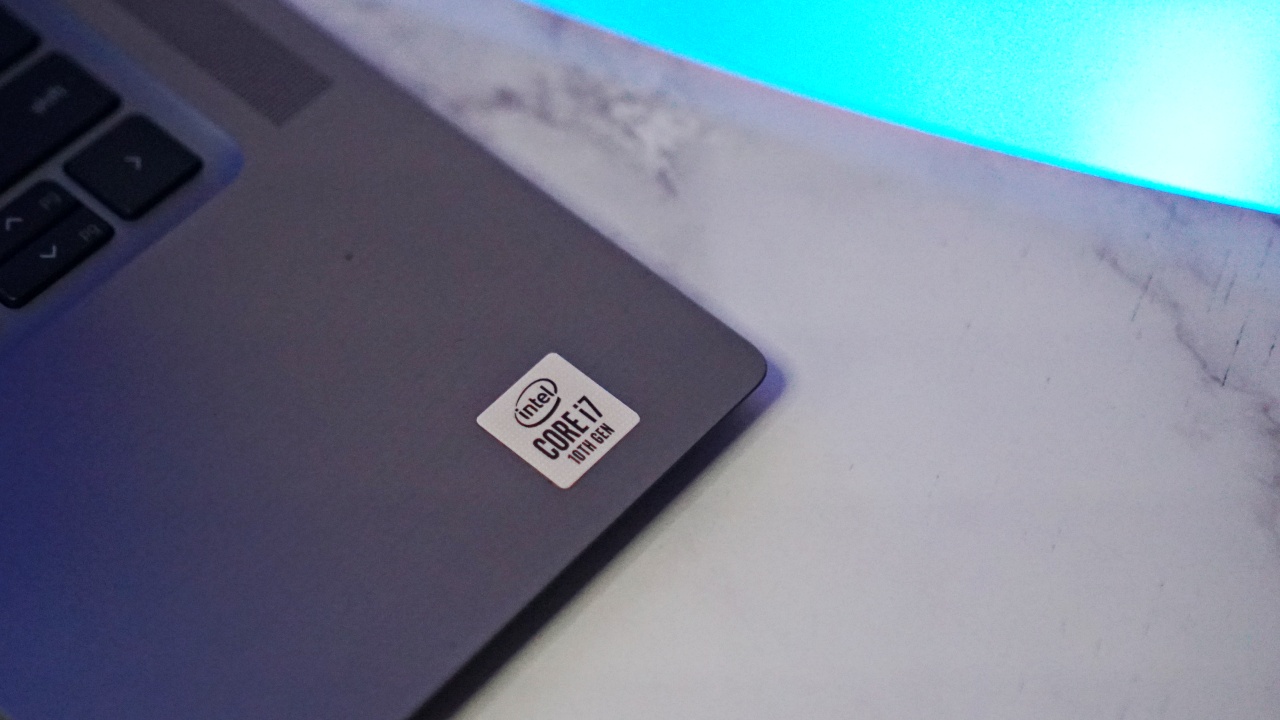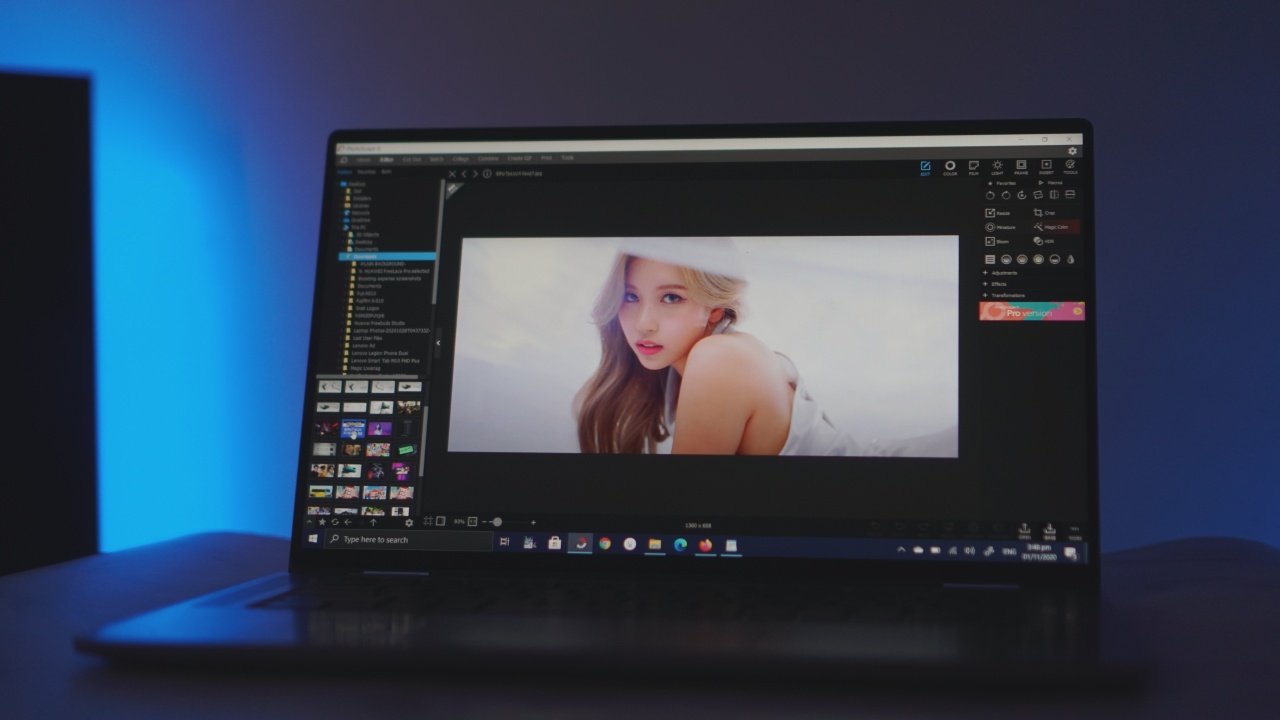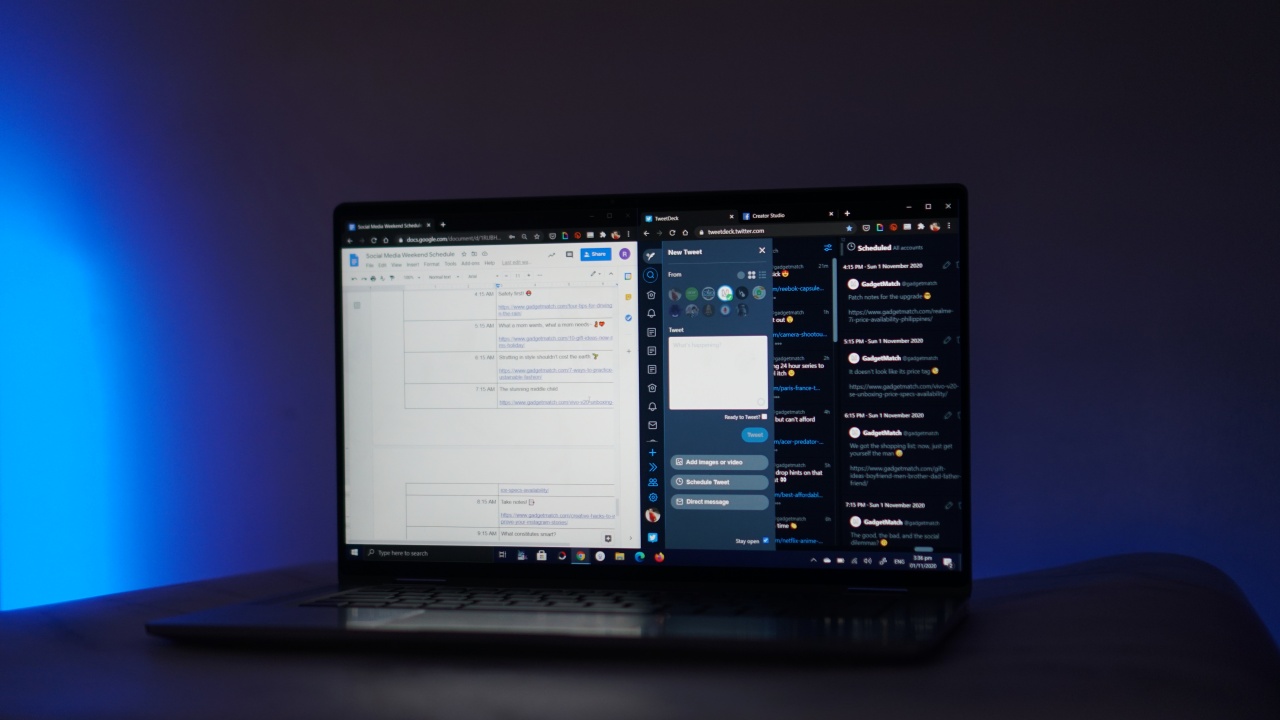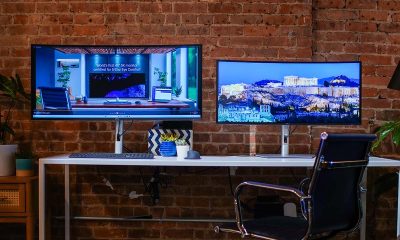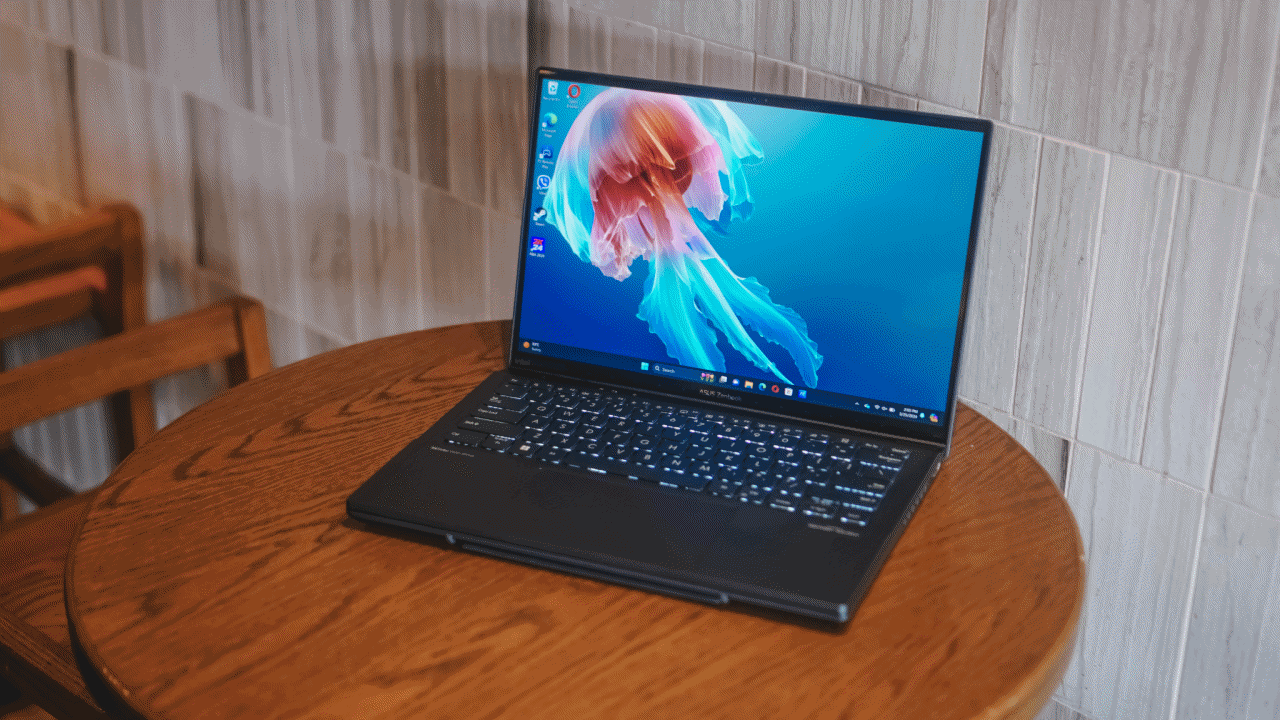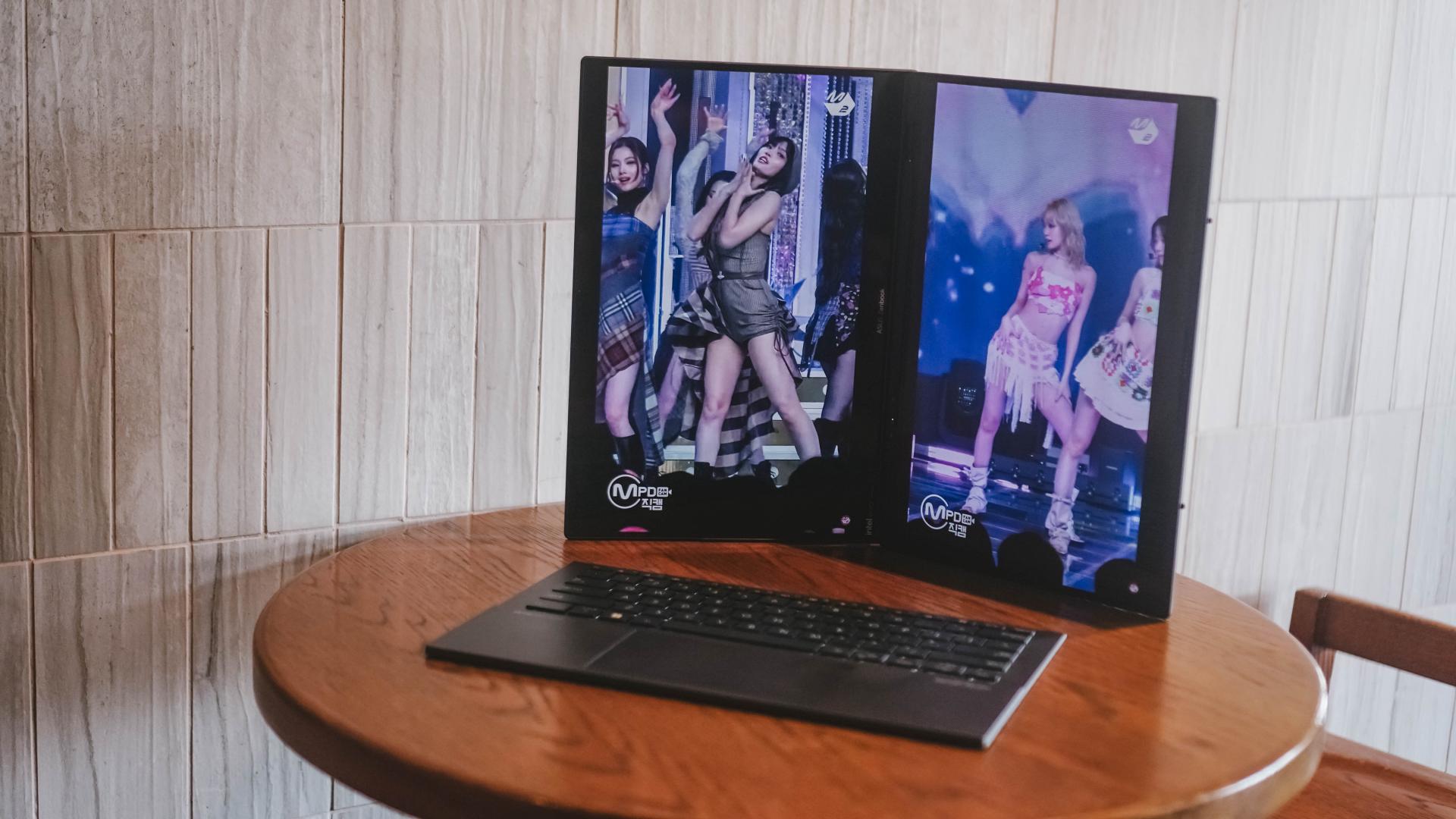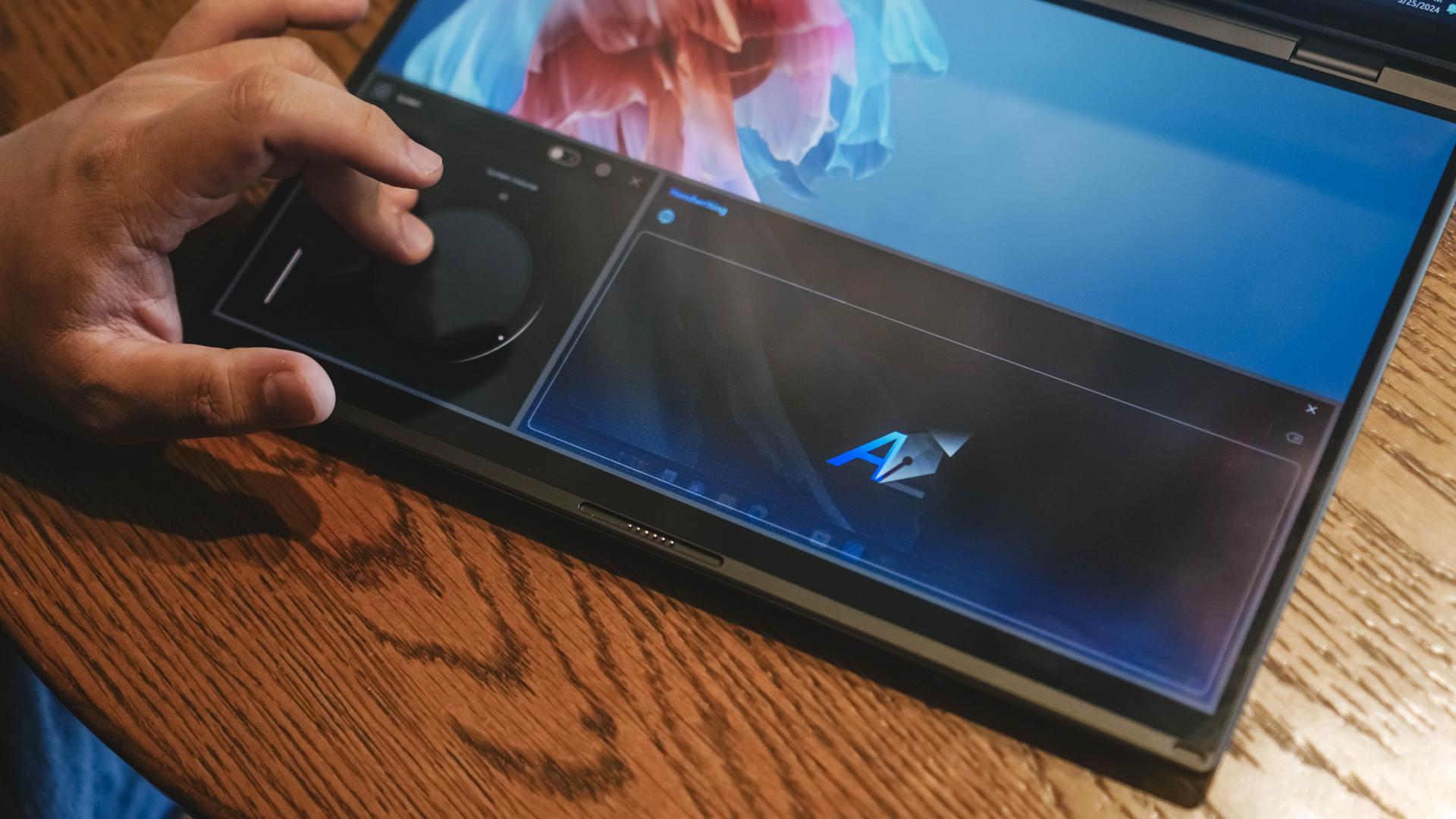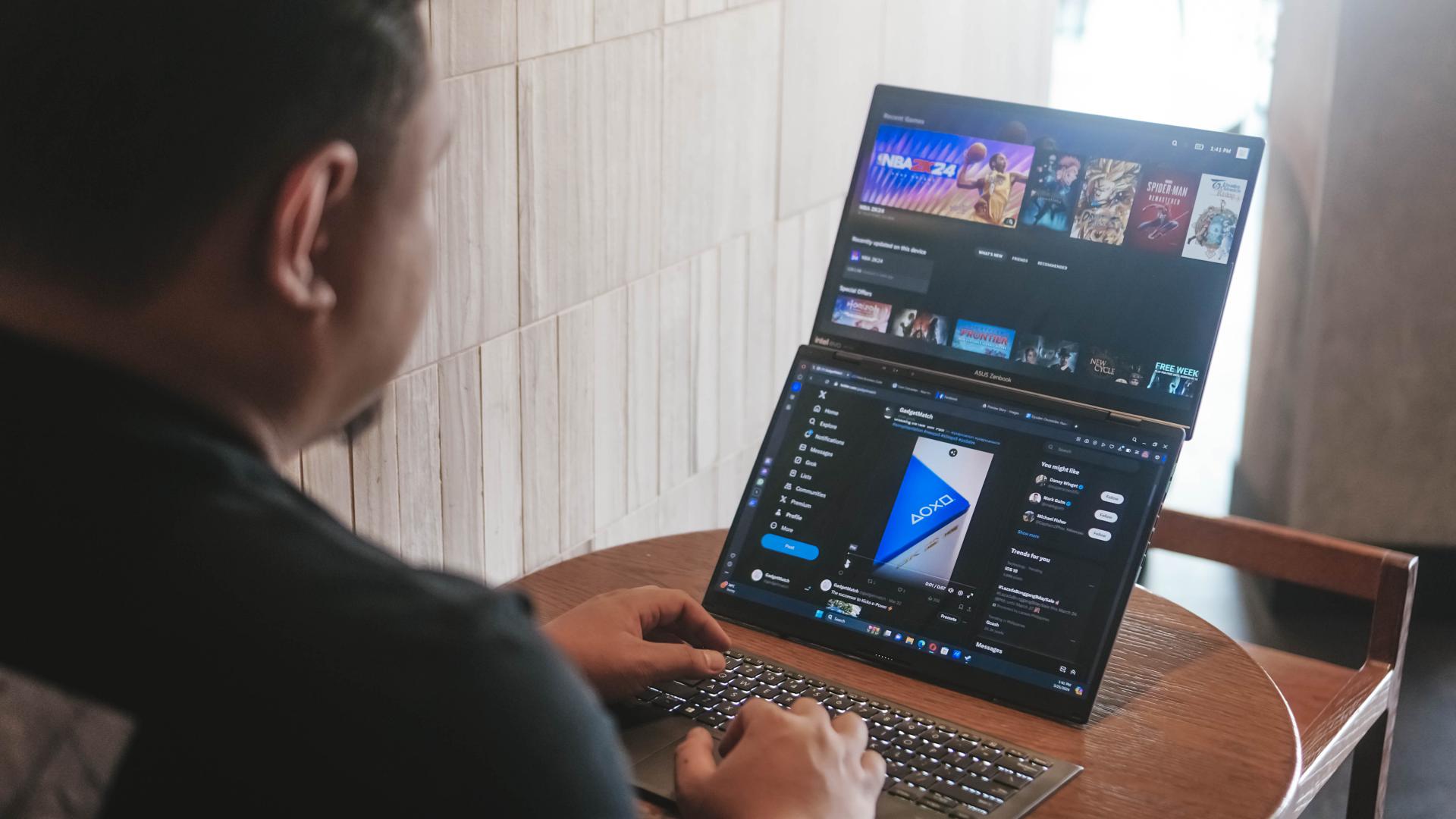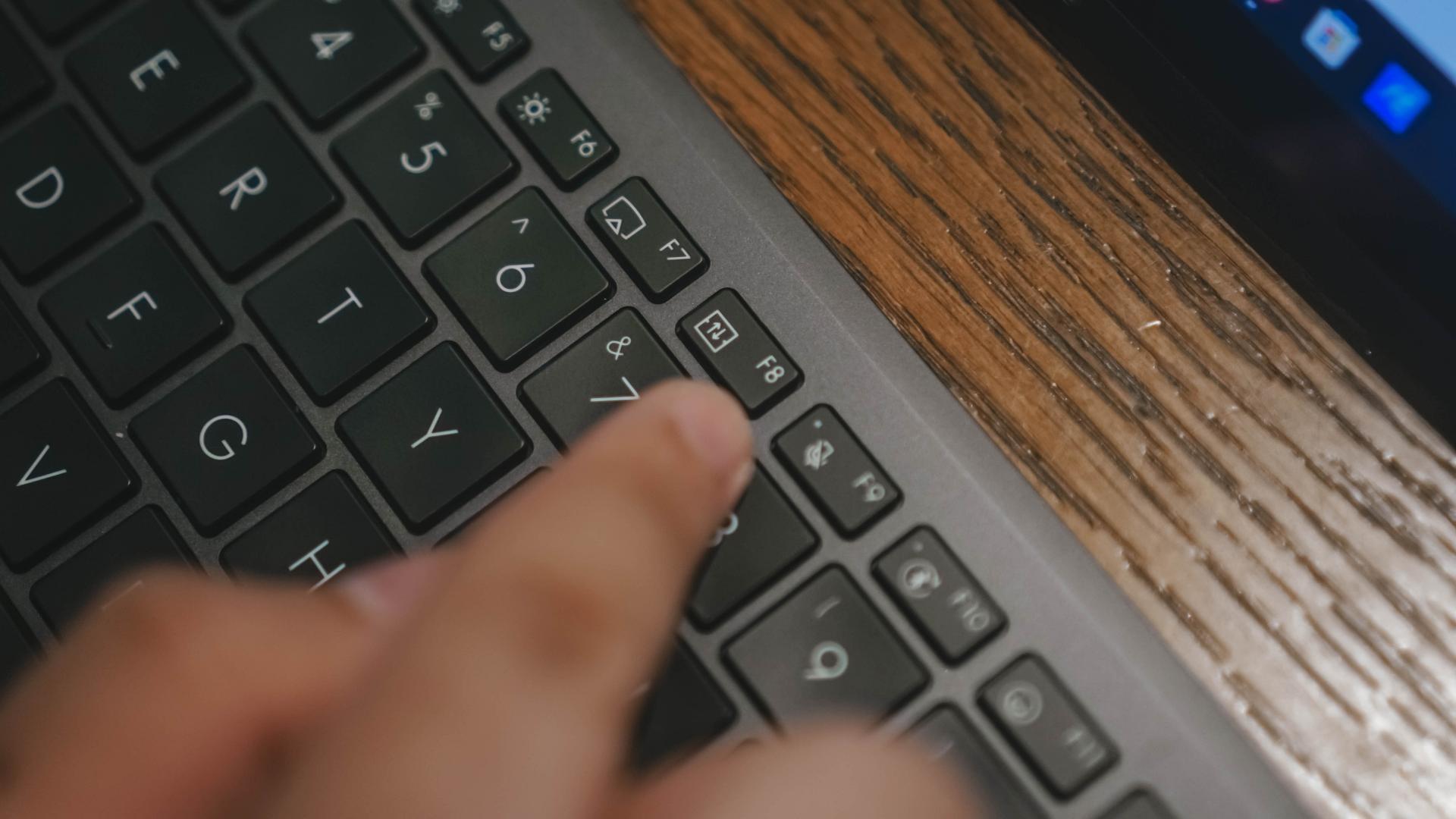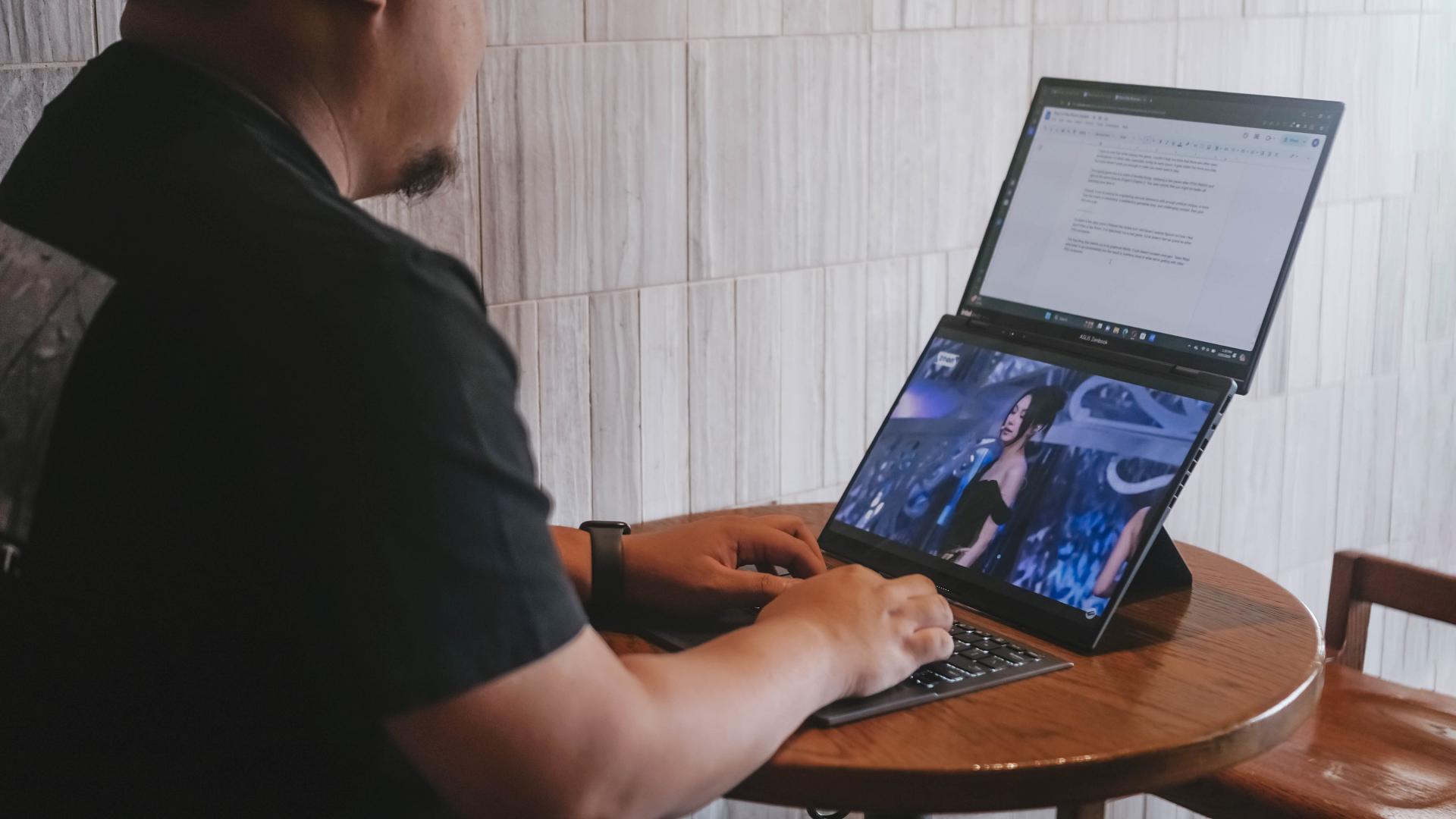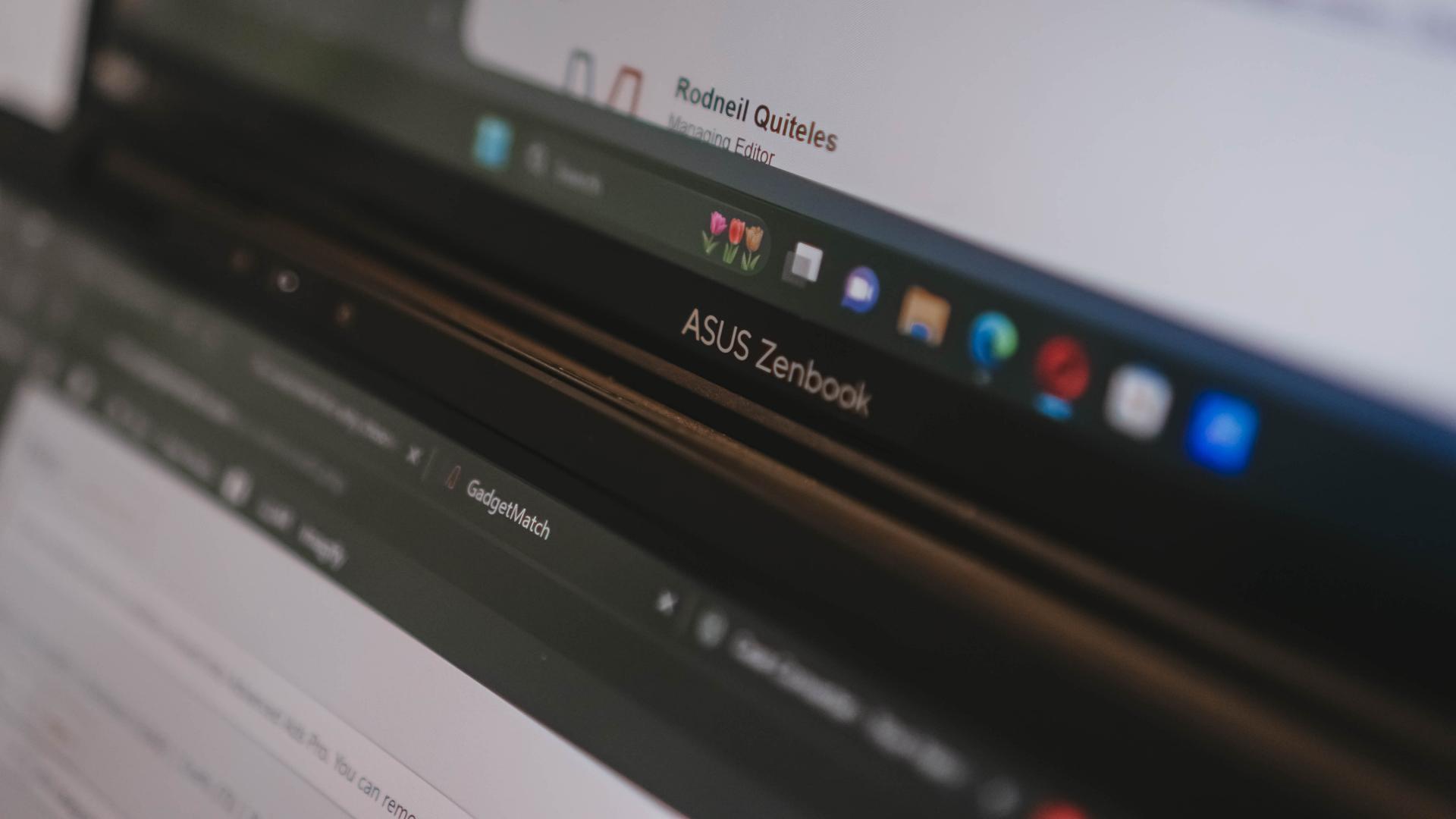

“Touching Dell is a sensual experience.”
This is how our Associate Creative Director described Dell when I asked what it’s like using one. That’s not verbatim as the original quote is much more R-18. That said, it got me curious. But the very moment I laid hands on the Dell Latitude 9510 2-in-1, I immediately realized what he was talking about.
We often talk about how well-built and premium certain devices feel, and the Latitude 9510 (which is how I will refer to it starting at this point), is as premium as it gets.
The brush metal finish isn’t all-look. It’s really tough.
It’s consistent look and toughness feel extends to the hinge.
This is, after all, a 2-in-1 so you can spread it like so.
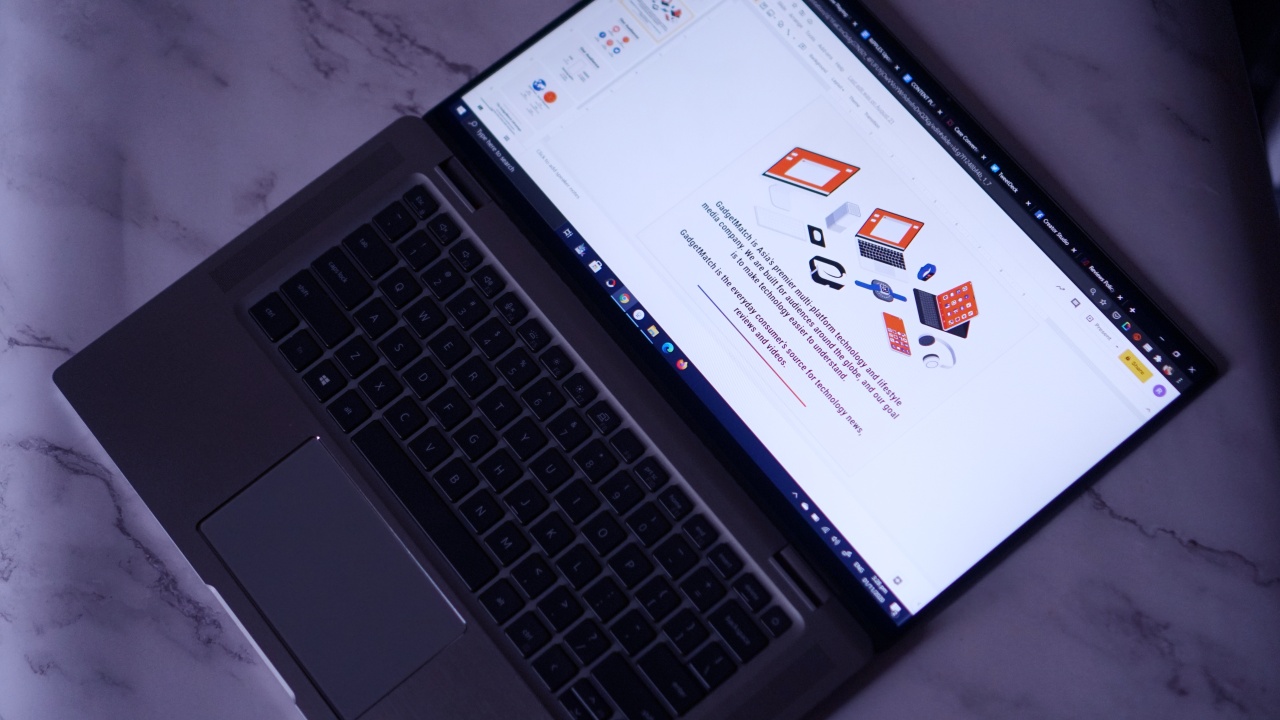
Here’s another look at the hinge when it’s positioned like that.
While we’re at it, a quick look at the ports. On the right side are: Wedge-shaped lock slot, audio combo jack, and USB 3.2 Gen 1 (with power share).
Over to the left you’ll find: HDMI 2.0, two Thunderbolt3 with Power Delivery and Display Port, and uSD 4.0 Memory card reader.
This unit in particular is powered by a 10th Gen Core i7 processor (4 Core, 8M Cache, base 1.8GHz up to 4.9GHz, vPro Capable).
While we’re on the subject, here’s the rest of the internals:
- 8GB memory, Intel UHD Graphics
- 8GB, 2133 MHz, LPDDR3, Integrated
- M.2 256GB PCIe NVMe Class 35 Solid State Drive
- Intel® Wi-Fi 6 AX201 2×2 802.11ax 160MHz + Bluetooth 5.1 Wireless Card
- 52 WHr Polymer, ExpressCharge capable
All of these combined for what I would say is one of the most hiccup free Windows laptop experiences I have ever had.
I wouldn’t exactly call my daily grind a true testament to stress-testing a laptop. However, there’s enough variety that would have me running multiple browsers as well as photo and video editing apps on any given day.
You can characterize my usage as perhaps one that closely resembles an active office worker. I’m always hopping from writing on GoDoc or Microsoft Word, editing an image on Photoscape X, or arranging GoSheets for our contributors’ payroll.
These aren’t super strenuous tasks to a computer by any stretch of the imagination, but each and every task certainly felt more smooth than previous laptops I’ve tried of late. And it’s certainly faster than my nearly 6-year-old beaten and battered MacBook Pro.
The four top firing premium speakers with Waves MaxxAudio was a joy to use.
Normally when I take breaks, I fire up the TV and line-up a few YouTube videos to watch while I have lunch or grab a snack. I never felt the urge to do that on the Latitude 9510.
The reason being the speakers are so loud without distorting the audio.I felt little to no urge to open my TV and there was little compromise despite watching on a 15-inch, 16:9 FHD display.
Speaking of the display…
I had been using a notebook with a 3:2 ratio prior to this and it took longer than expected for me to adjust to the display size. What I figured would take only a day stretched to about 2-3 days.
One of my favorite things on Windows 10 is the split screen feature. Simply snap on a tab or an app to the upper left or upper right edge of the screen and it’ll snap into place. If you’re wondering why I’m gushing about this, it’s because I’m a longtime Mac user and I just didn’t have this. Or at the very least, not as convenient as it is on Windows.
It’s perfect for referencing a press release when I’m writing an article or for when I’m on social media duty scheduling posts on our Facebook Page and Twitter account which you should totally follow.
More on the topic of “getting used to”, the keys on the keyboard are so much smaller than I would have liked. While they have a decent amount of travel, my stubby fingers took even longer to adjust to its size and would end up with more typos than I usually commit.
Took me about five days to really get the hang of the keyboard. That’s saying something because I literally type everyday. That said, it didn’t, in any way, affect my perception of the laptop’s overall premium experience.
Power management king
What impressed me the most with the Latitude 9510 is its power management. Oftentimes towards the end of most workdays, I’d tell myself that I’ll just take a quick break. The quick break turns into a full-on sleep due to exhausting with the laptop I’m using left open and unplugged.
Most laptops would run the battery dry, but the Latitude 9510 is smart enough to turn the laptop off. But that’s not even the most impressive thing. When I switch it back on, it’s like I never left. All the stuff I was working on, all the tabs, all the apps are right there ready to be picked up where I left off.
This simply isn’t the case with most other laptops I’ve used other than MacBook Pros.
Should it have been a 2-in-1?
Specifically for my use-case, I never found the need to use its capabilities as a 2-in-1 device. With its size and weight (1.4kg/3.03lbs), I thought it was too heavy for most people to wield it like a tablet.
I imagine it would be great if, say you’re going to showcase slides in a meeting. Propping it up in ‘tent mode’ would make it easy to show and discuss the slides. But for this specific form factor, it’s just too big. Perhaps 2-in-1s are best kept to at most 13-inch notebooks.
Other benefits
This being an enterprise business laptop comes with some extra perks. The Dell Client Command Suite + VMware Workspace ONE lets your IT personnel manage firmware, OS, and apps from one console.
There’s also ProSupport that resolves hardware issues up to 11x faster than most other brands. ProSupport for PCs offers 24×7 access to in-region ProSupport engineers who contact IT when critical issues arise, so you can focus on what’s next, not what just happened.
Is the Dell Latitude 9510 2-in-1 your GadgetMatch?
Truth be told, this Dell Latitude 9510 2-in-1 is an overkill of a laptop, at least for what I do. It’s too strong, too premium, too powerful for the tasks that I threw at it.
But the “Hey Daddy” laptop tag is no mischaracterization. With all its excellence in performance comes a premium build that, as my colleague described, feels dangerously close to a “sensual experience.”
Highly dependable is the best way to describe this notebook. It literally has everything you can ask for in a work-oriented notebook. I also cannot stress enough the level of premium-ness (I doubt that’s an actual word) it exudes.
You’re paying a premium (PhP 113,500) to have this laptop be constantly at your side, but that premium comes with benefits that will last you for years, perhaps even close to a decade, which is exactly what you want out of any laptop.

Laptops
Qualcomm announces Snapdragon X Series laptop processor
High performance, fast responsiveness, better power efficiency

Qualcomm has announced the Snapdragon X Elite laptop processor in a bid to match competitors like Intel, AMD, and Apple. It is the flagship platform as part of the Snapdragon X series, which also includes the X Plus variants.
The X Elite processor focuses not only on high performance and fast responsiveness, but also power efficiency for multiple days of battery use. Additionally, it is AI-ready, harnessing the power of the Qualcomm AI Engine and integrated Qualcomm Hexagon NPU.
Game-changing performance, efficiency
The Snapdragon X Elite processor has a 4nm SoC architecture and 12-core Qualcomm Oryon CPU to optimize demanding workloads. The processor also features up to Dual-Core boost for fast responsiveness. Qualcomm will also integrate its Adreno GPU so laptop brands can deliver stunning graphics for immersive entertainment. Moreover, the processor also has a low-power consumption mechanism to support multi-day battery life on just a single charge.
Built for AI
Next, the Snapdragon X Elite platform is tailor-made for today’s laptops that utilize AI. The processor leverages the Qualcomm AI Engine and an integrated Qualcomm Hexagon NPU. These shall work together to deliver transformative experiences for creativity, video conferencing, and more. The processor is capable of running Generative AI LLM models over 13B parameters on-device at blazing-fast speeds. The AI Engine also supports Windows Studio Effects, and many other AI-accelerated applications to support users’ various needs.
Furthermore, an updated Micro NPU inside the Qualcomm Sensing Hub will allow for enhanced security, login experience, and privacy. It also has the ability to wake the device up when in sleep mode. Sensitive data, meanwhile, can stay on the laptop with increased security.
Smarter user experiences
To give users a better idea of how capable the processor is, here are a few benchmarks. Laptops running on the Snapdragon X Elite can seamlessly play UHD graphics at 120fps, and up to 5K content at 60fps. It will let you record yourself at 4K HDR with up to a 64MP built-in camera. It will work hand in hand with up to 64GB of DDR5 memory, and can support download and upload speeds of up to 10Gbps and 3.5Gbps, respectively.
In terms of connectivity, the platform supports Bluetooth 5.4 and Wi-Fi 7 with HBS Multi-Link for seamless connectivity. Snapdragon Seamless also lets users to easily switch between devices.
Snapdragon X Plus
Alternatively, Qualcomm is also soon introducing the Snapdragon X Plus processors. They have just two less cores at 10 Qualcomm Oryon CPUs, and offer up to 3.4GHz of processing power.
Much like the X Elite, Qualcomm promises the X Plus to deliver topnotch processing across CPU, GPU, NPU, and Micro NPU for the PC class that will be housing them.
Moroever, these platforms fortify AI processes to make it easier for users, whatever their computing needs may be.
Release date
There aren’t concrete reports yet about its official release date and what PC brands have already committed to use the platform. But there is an interesting Reddit thread here that connects the dots and also mentions when Windows 12 is expected to release. For now, what Qualcomm intends to do with the Snapdragon X Elite processor sure sounds promising. It’s definitely meant for higher tier, gaming and creator-level laptops.
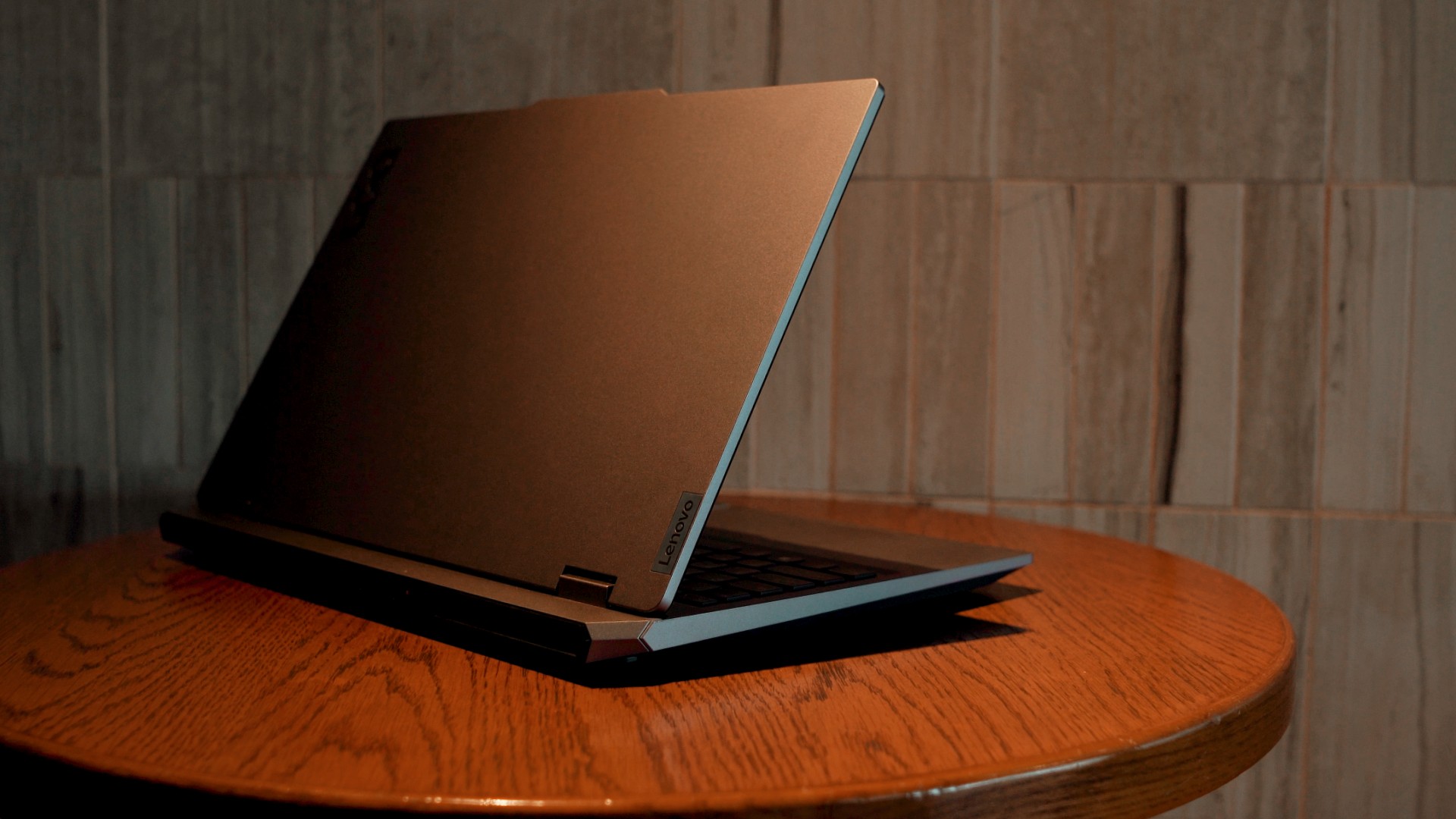
Get your game on with the Lenovo LOQ 2024. This capable laptop is your entry point to PC Gaming and a lot more.
It comes an absolutely affordable price point: PhP 48,995.
You get capable hardware and the hood to support gaming and more. The Lenovo LOQ 15IAX9I runs on the 12th Gen Intel Core i5 processor and Intel Arc Graphics.
Those are key to bringing unreal graphics to this segment. Supporting latest tech like DirectX 12 Ultimate, players are able to enjoy high frame rates on the Lenovo LOQ.
Creating content? It comes with AI Advantage to help boost performance. Engines and accelerators boost the media processing workloads especially for creatives. It also works with Intel’s X Super Machine Learning, Leading to images that are as close to reality.
The laptop supports a configuration of up to 32GB of RAM and 1TB of SSD Storage.
As for its display, the device has a large 15.6-inch, Full HD panel that is more than enough for gaming, video editing, content consumption, and whatever else you do on a laptop. This display has 144Hz refresh rate, 300 nits brightness, and anti-glare.
Videos come out clear, crisp, and realistic. Audio is punchy and as loud as it gets. Windows Sonic elevates it more when you use headphones. And it just takes a few minutes to render HD videos on editing software.
As it runs on Windows 11, if you are going to use it for work, you can take advantage of various features. The Lenovo Vantage Widget is there for constant reminders, Copilot will help you organize your tasks, and Microsoft Edge is there for casual browsing.
There is an assortment of ports at the back for easy connectivity. And as this is meant for gaming, we put it to the test. Racing that looks better with high frame rate? Check. Shooting titles that require heavy work? Not a problem. You can play all your favorites and not worry about performance.
Best of all, it takes less than an our to juice up this laptop all the way to 100%.
So, whether you’re looking to get started with PC Gaming, or an upgrade for work and entertainment needs, the Lenovo LOQ has you covered.
This feature is a collaboration between GadgetMatch and Lenovo Philippines.

The ASUS Zenbook Duo 2024 came into my life at such a weird time. Over the past few months, I have been actively trying to build a workflow that’s not reliant on having to bring a laptop all the time. Yet, here comes ASUS’ latest and possibly best dual screen laptop yet, opening up possibilities I personally never even imagined.
Here’s my time so far with the ASUS Zenbook Duo 2024.
Multiple modes
The multiple modes available to you with this unique form factor have been well documented. But here’s a quick recap.
Naturally, there’s Laptop Mode. If you don’t care for extra attention when you’re out and about while working, this is likely the mode you’ll stick with most of the time. Due to its nature, this is also the mode where you’ll be able to squeeze out more usage from the device because the other screen is not in use. More on that later.
There’s Dual Screen Mode. Next to Laptop Mode, this is the orientation I use the most, especially when I’m able to plug the device. So, at home, this is mostly how I used the Zenbook DUO 2024. I’m starting to get so used to this mode that when I do work on the regular Laptop Mode, something feels lacking.
Lastly, there’s Desktop Mode. It’s essentially just like Dual Screen Mode but with the Dual Screen in portrait orientation. I’ve never used this to work and only really went to this orientation to showcase it.
A key thing that makes all of these possible is the underrated inclusion of a kickstand. It feels like a natural part of the whole contraption that it’s mostly just a passing mention in most discussions about the Zenbook DUO 2024. But I think it’s a big part of what makes all of it work seamlessly.
There isn’t a name for it but you can also lay the laptop flat on the table fully spread. It’s great when you’re trying to present something to someone across the table. Also feels like more apps can get some sort of use-case for it if the form factor ends up being popular.
Other knick knacks
ASUS also made sure to make this as usable as possible even if, for whatever reason, you misplace the bluetooth keyboard.
You can tap the bottom screen with six fingers to pull-up a Virtual Keyboard. It’ll never feel as good as a physical keyboard, but it’s there in case you happen to need it.
Swipe down with six fingers and you’ll get the Easy-access tools. Here you’ll have handy things like handwriting input, the control panel, as well as the number key and quick key.
Lastly, you can tap the screen with three fingers to get the Virtual touchpad. This layout is reminiscent of the earlier Zenbook Duo designs.
Does anyone ‘need’ this?
They say necessity is the mother of invention, so what was the thing that necessitated the creation of this dual screen laptop?
Personally, I think more screen real estate is always a boon. And over the years, more and more people have squeezed out plenty of usage out of multi-monitor desktop setups. What ASUS did here is they took that concept and made it more mobile.

For me specifically, I’ve used it to run two browsers side-by-side. One for the material I need to reference, the other for the Google Doc that I stare blankly at as I try to cobble words together to make sense of things.
It’s also great for video editing. You can have one entire screen to be the preview area and reserve the other for your timeline and work area. It’s so much easier than having to preview your video on 25% or less of a regular screen.
In these particular instances, productivity is most definitely enhanced. It saves time because you no longer have to press alt+tab as much to switch apps. And it’s easier than ever to glance at multiple apps at once.

Part of my work is also communicating on multiple chat apps. There’s Slack, Messenger, Telegram, WhatsApp, and Viber. Different sets of folks prefer different apps. It can be cumbersome but it’s something I’ve gotten used to. Having Dual Screens as well as the ability to split view apps in these screens has been a godsend. It’s now easier and faster to see which apps have a pending message I need to attend to.
And you can just as easily switch what’s on each screen with a single tap of this button on the F8 key.
It didn’t exactly feel like it while I was using the Zenbook DUO 2024, but as I now sit and ponder on how I’ve used it over the past couple of weeks, I definitely see how it’s helped me get some things done faster even if it’s just by a small percentage.
It’s also great to just have a video running on either screen while you work on the other.
Lastly, there’s this little quality of life thing where my primary screen is now near eye-level even if I’m not using a separate monitor. It’s great for one’s posture. I just have to find a better work chair now.
A Dual Screen believer
Over the past year, I have fancied myself a foldable enthusiast. On the daily I switch between the OPPO Find N3 and the HONOR Magic V2. Something about having more screen real estate flips a productivity switch in my brain.
I can’t say the Zenbook DUO 2024 has had the exact same effect, but it’s definitely in the same neighborhood. The additional screen has unlocked possibilities that at this point, I would say are still just “nice-to-have.” I can certainly still go back to a regular laptop and not miss a beat. When it comes to smartphones, I think my personal preference now is totally the foldable kind. I’m not there yet when it comes to laptops.
That said, this form-factor definitely has merit. Even Lenovo has something similar with the Yoga 9i. That alone will show you that there might just be enough demand for this kind of laptop.
Dual drawbacks
There are two things, though, that don’t make this an absolute slam dunk for me. That’s Microsoft Windows and the battery life.
For context, I’ve been using a 2020 13-inch MacBook Pro M1 for the better part of the last four years. And prior to that, I’ve used a MacBook Pro for most of my time as a media professional. When it comes to software fluidity and battery life, I have been spoiled.
To me, Windows just isn’t as fluid and does not feel as seamless as MacOS. Don’t get me wrong, it has certainly come a long way. I get by now with the same gestures using only the trackpad. There was a time when Windows trackpads just weren’t usable for me.
Don’t get me wrong, I am fully aware of the advantages of Windows and how much more control you can have over it if you’re the type to really dig down in the settings. But that’s not me. I do not have the luxury of time to be doing so much tweaking.
And while the Windows vs MacOS thing is debatable and largely boils down to preference, the same isn’t true for battery life. With my 13” MacBook Pro M1, I feel confident going out and not having to plug it for an entire day. I know I’ll have enough juice left for an entire heavy work day and then some.
That just isn’t true for the ASUS Zenbook DUO 2024. Especially since I prefer using it in Dual Screen mode. That means I am limited to around 3.5 to 4 hours in this specific mode because the screens consume more power and the bluetooth keyboard can only last that long.
These aren’t absolute deal breakers, but they are things you definitely should consider if you’re thinking about getting this dual screen machine. You best know all the spots with an electricity outlet or at least have a heavy duty power bank on hand to keep things running all day.
Is the ASUS Zenbook DUO 2024 your GadgetMatch?
All things considered, the ASUS Zenbook DUO 2024 is a fantastic machine. After two weeks, I haven’t even tapped into its full potential yet, but the improvements in my work efficiency are noteworthy.
At PhP 129,995, it does command a hefty price tag. Whether or not the benefits are worth it will ultimately come down to how you plan to incorporate its dual screens to your workflow. If you see yourself needing to work on dual screens while you’re on the go, this is about as good as it gets.
Everything equipped in this machine is top-of-the-line: Intel Core Ultra 7 155-H, 32GB of LPDDR5x RAM, 1TB of PCIe 4.0 NVMe M.2 SSD storage, and more. You also get a healthy number of ports: 2x Thunderbolt, 1x USB 3.2 Type-A, 1x full-size HDMI 2.1, 1x audio combo jack.
There’s more than enough power here to fuel most workflows. And you get all of that with twice the number of screens. I wouldn’t jump in blindly, but if the ASUS Zenbook DUO 2024 is something you fancy, you’ll definitely feel special once you have it on hand.
-

 Events2 weeks ago
Events2 weeks agoStellar Blade: PlayStation taps cosplayers to play Eve for game’s launch
-

 Features1 week ago
Features1 week agoFortify your home office or business setup with these devices
-

 Gaming2 weeks ago
Gaming2 weeks agoThe Rogue Prince of Persia looks like an ultra-colorful roguelite
-

 Accessories2 weeks ago
Accessories2 weeks agoLogitech unveils G Pro X 60 gaming keyboard: Price, details
-

 Reviews1 week ago
Reviews1 week agorealme 12+ 5G review: One month later
-

 Gaming2 weeks ago
Gaming2 weeks agoLenovo confirms development of a Legion Go 2
-

 Deals2 weeks ago
Deals2 weeks agoTCL P635 TV: Big savings for TCL’s anniversary
-

 Gaming1 week ago
Gaming1 week agoNew PUMA collection lets you wear PlayStation’s iconic symbols





